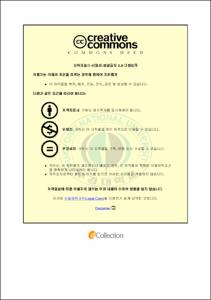Effect of Several Seaweeds on Gut Regeneration of the Sea cucumber, Apostichopus japonicus
- Abstract
- In the present study we examined the importance of Seaweed in alteration of Apostichopus japonicus (Selenka) body parts. Sea cucumber of Size 29.0±11.0gm and 10.0±3.0cm were fed powder of 14 different Seaweed species in 14days after 7days of recovery from evisceration which was induced by injecting 0.7M of KCl which is 4% of their body weight. After total 21days of culturing, body weight, body length, gut weight growth rate and gut length growth rate were evaluated in each group. The results showed that Laminaria japonica, Ulva pertusa, Lomentaria catenata and Gelidium amansii have higher effect in weight gain ranged between 33±4.2gm and 25.75±2.05gm while Sargassum honoreri and Enteromorpha linza showed the least weight gain of 20.3±3.76gm and 11.0±0.0gm respectively. Laminaria japonica, Lomentaria catenata, Ulva pertusa and Scytosiphon lomentaria showed increased body length effect ranged between 14.1±1.3cm and 11.0±0.5cm while Carpopeltis comea, Hypnea pannosa and Sargassum hemiphyllum showed the least effects ranged between 9.4±0.85 and 9.0±1.0cm. The gut weight to body weight ratio was significantly higher in Ecklonia cava, Undaria pinnatifida and Gelidium amansii, which ranged between 0.1085±0.01mg/gm and 0.0512±0.01mg/gm while significantly lower ratio was observed in Ulva pertusa, Hypnea pannosa and Lomentaria catenata which ranged between 0.0165±0.004mg/gm and 0.0121±0.0034mg/gm. In the contrary, gut length to body length ratio was significantly higher in Undaria pinnatifida, Sargassum thunbergii and Ulva pertusa, which ranged between 1.0513±0.16mm/cm and 1.022±0.265mm/cm but Ecklonia cava, Sargassum hemiphyllum, Chondrus ocellatus and Gelidium amansii showed little effects ranged between 0.9005±0.16mm/cm and 0.813±0.05mm/cm. Scytosiphon lomentaria, Laminaria japonica, Sargassum honoreri, Carpopeltis comea, Lomentaria catenata, Ecklonia cava and Hypnea pannosa showed least effects ranged between 0.5859±0.04 and 0.3651±0.03mm/cm. These suggest that Seaweeds can play important role in improving the quality and quantity of Sea cucumber body parts including guts which can be utilized as nutritional source.
- Issued Date
- 2014
- Awarded Date
- 2014. 2
- Type
- Dissertation
- Publisher
- 부경대학교
- Affiliation
- 글로벌수산대학원
- Department
- 글로벌수산대학원 국제수산과학협동과정
- Advisor
- 홍용기
- Table Of Contents
- List of Figures V
List of Tables VII
Chapter I VIII
Abstract VIII
1. Aquaculture of Sea cucumber 1
1.1. Distribution 3
1.2. Production 4
2. Biological knowledge 4
3. Hatchery production 6
4. Broodstock conditioning and spawning 6
4.1. Larval culture 8
4.2. Juvenile rearing 8
4.3. Disease and parasites 10
4.4. Diseases and Control Measures 13
5. Sea farming 15
5.1. Pond grow-out 15
5.2. Co-culture 16
5.3. Farming in sea pens 17
5.4. Cage farming 18
5.5. Sea ranching 18
5.6. Stock Enhancement Program 19
6. Management issues 20
6.1. Threats of Exotic Species and Pollution 20
7. Conclusions 21
References 23
Chapter II 47
Abstract 47
1. Introduction 61
2. Materials and Methods 63
2.1. Stimulation methods 63
2.2. Seaweed Materials 64
2.3. Rearing condition and feeding 64
2.4. Statistical analysis 68
3. Results 69
3.1. Effects of different stimulation methods 69
3.2. Sea cucumber Measurements 70
3.3. Effects of seaweed on the sea cucumber's body 74
4. Discussion 84
5. Conclussion 92
References 94
Acknowledgements 100
- Degree
- Master
- Appears in Collections:
- 글로벌수산대학원 > 국제수산과학협동과정
- Files in This Item:
-
-
Download
 Effect of Several Seaweeds on Gut Regeneration of the Sea cucumber, Apostichopus japonicus.pdf
기타 데이터 / 1.49 MB / Adobe PDF
Effect of Several Seaweeds on Gut Regeneration of the Sea cucumber, Apostichopus japonicus.pdf
기타 데이터 / 1.49 MB / Adobe PDF
-
Items in Repository are protected by copyright, with all rights reserved, unless otherwise indicated.